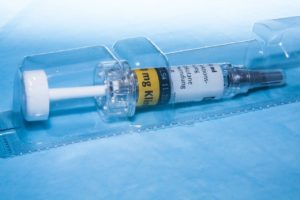Differentiate between the following;
(1) Positive and Negative feedback inhibition
(2) Reversible and Irreversible inhibition
(3) Competitive and uncompetitive inhibition

Differentiate between the following;
(1) Positive and Negative feedback inhibition
(2) Reversible and Irreversible inhibition
(3) Competitive and uncompetitive inhibition

You must be logged in to post a comment.
Reversible inhibition firstly follows the michealis menten kinetics while irreversible doesn’t.
The enzyme and inhibitor in reversible inhibition can be separated by dialysis( is reversible?)
Irreversible inhibition is the mechanism of action of poisons while reversible is that for drugs.
Competitive inhibition involves an inhibitor that is structurally similar to the substrate so it competes with the substrate for active site. It increases the Km of the substrate and thereby reduces the enzyme affinity for the substrate.
Uncompetitive is opposite both the Km and the Maximum velocity are affected increase in substrate concentration has no effect.
Negative inhibition is a type of inhibition where the product of a biochemical pathway binds to the enzyme(mostly the pacemaker enzyme), changes it’s structural conformation and make it impossible for the substrate it should catalyze to bind to it thereby reducing the concentration of the products while negative inhibition does the opposite
2. Reversible inhibition is a type of inhibition where an inhibitor binds with enzyme in a non covalent bonding way or in a reversible way while irreversible is when inhibitor (maybe a poison or a drug targeted at a metabolic pathway of a bacteria or virus) binds to an enzyme irreversibly…
3. Competitive inhibition is a type of inhibition where an inhibitor competes with the substrate for the active or catalytic site while uncompetitive…binds with the enzyme and the enzyme-substrate complex
First time I’m seeing a Biochemistry question though😌….please keep these kind of questions coming
3.I would relate my thoughts to Enzymatic inhibitions
Competitive Inhibition is a type of Enzymatic inhibition defined as one where the Inhibitors (Substances which Prohibit formation of a product) bind to the Active site of an Enzyme rendering the Enzyme nonfunctional ie The inhibitor competes with the substrate for binding rights at the Active site
While Uncompetitive inhibition is defined as an inhibition type where the inhibitor binds to a site other than Active site on the Enzyme ie doesn’t disturb the Active site for the normal binding of Enzyme and substrate
1.Positive feedback inhibition can be defined as a feedback mechanism which Accelerates the Change in stimulus in order to return back to normalcy ie A System notices a change and then releases certain mechanisms which do not change the direction of the stimulus.
While Negative Feedback is defined as one where the effect of the change is decreased in order to also return the system back to normalcy ie The stimulus is detected and certain mechanisms released to change the direction of the stimuli
2.An irreversible inhibitor inactivates an enzyme by bonding covalently to a particular group at the active site. A reversible inhibitor inactivates an enzyme through noncovalent, reversible interactions.
Reversible inhibition in enzymatic reactions is when the poison has a shape like the active site… It binds, form a complex and then leaves… For this reason it’s called competitive cause it looks like it’s competiting with the substrate for binding site
The irreversible inhibition in enzymatic reactions involves poison that wen bound to the enzyme forms a permanent complex… It does not leave… For this reatson it’s called uncompetitive…. Cause it’s not competiting with the substrates… Once it binds it binds